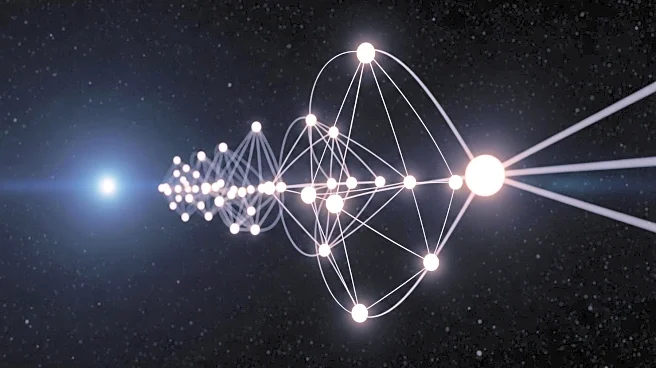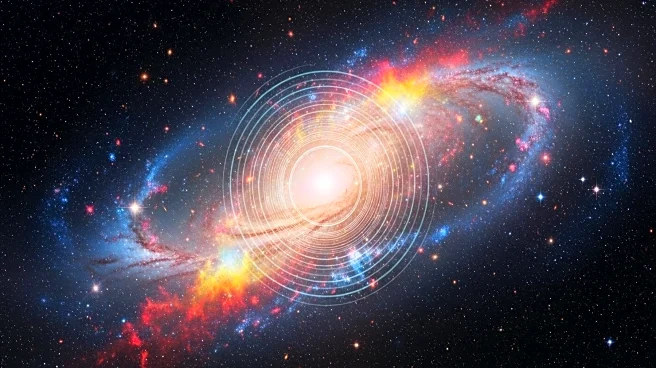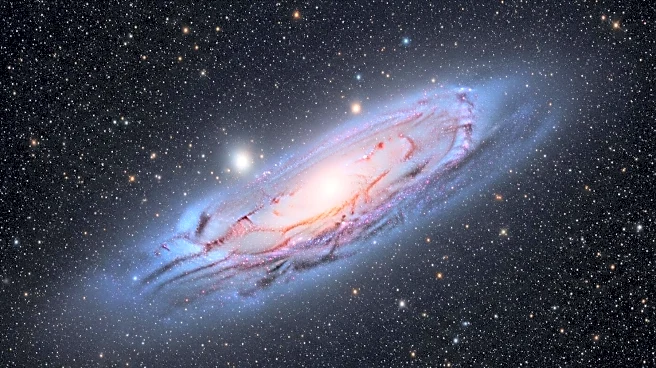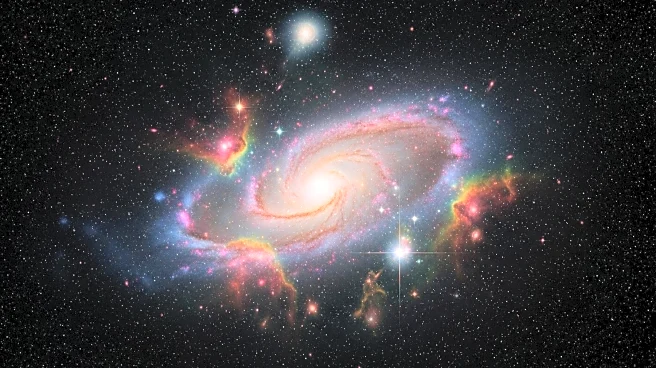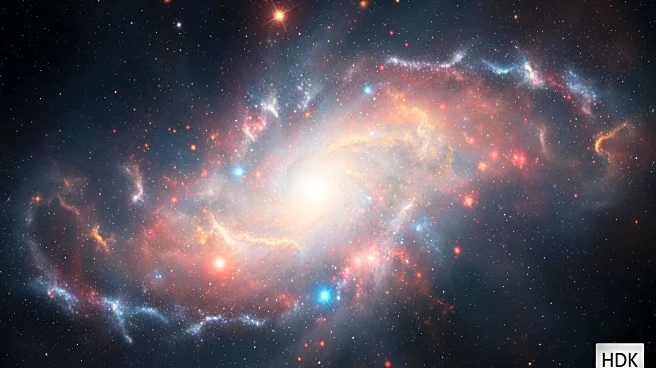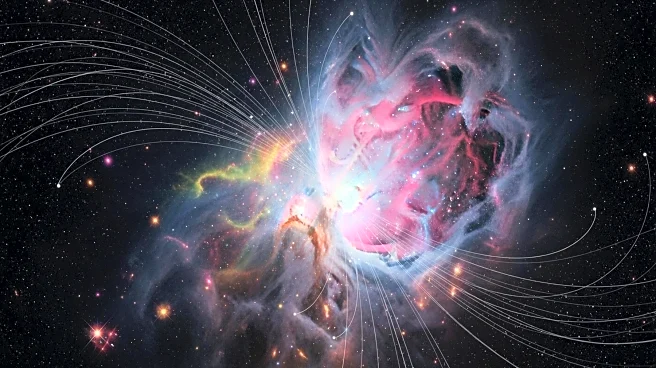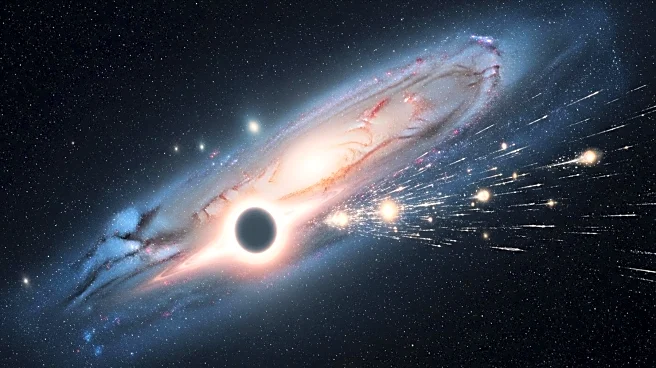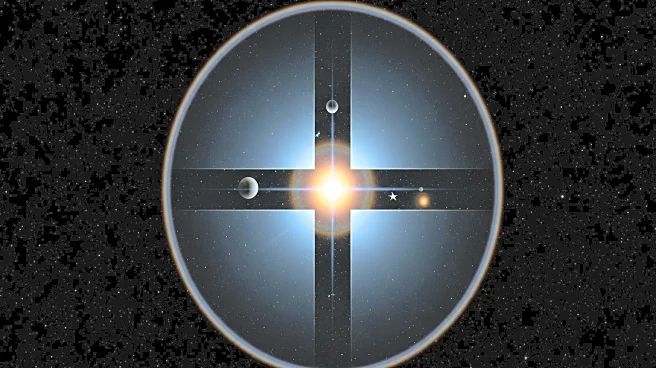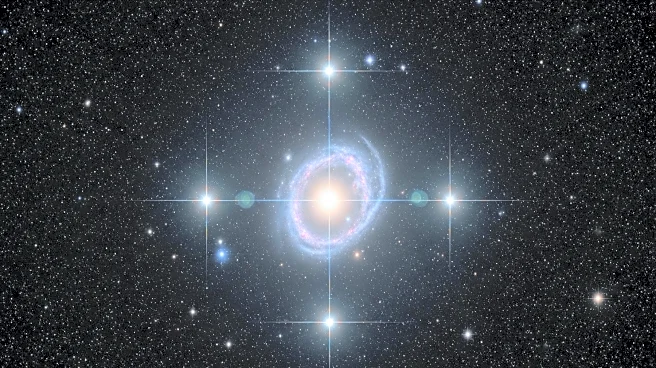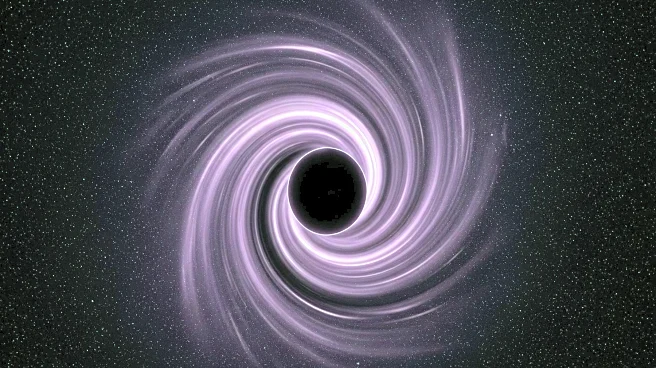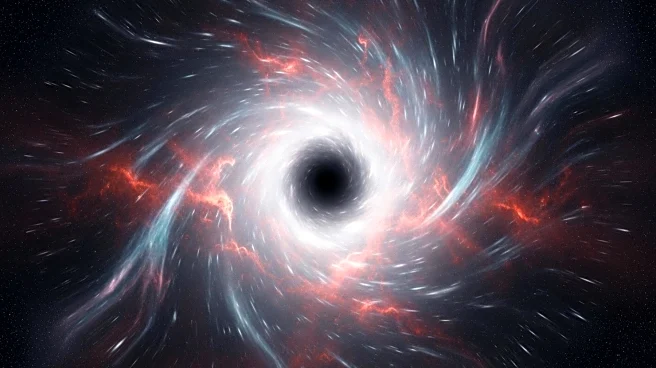What is the story about?
What's Happening?
A study conducted by SISSA, in collaboration with several universities, has revealed that the magnetic fields formed during the early stages of the Universe were significantly weaker than previously thought. These fields, comparable in strength to those generated by neurons in the human brain, have left quantifiable traces in the cosmic web, the filamentary structure connecting galaxies throughout the Universe. The research utilized around 250,000 computer simulations to establish possible and maximum values for the strengths of these primordial magnetic fields. The findings suggest that these weak fields played a crucial role in the formation of the first stars and galaxies, offering new insights into the early Universe.
Why It's Important?
Understanding the magnitude and influence of primordial magnetic fields is vital for refining models of the early Universe and the formation of cosmic structures. The study's results, which align with recent data on the cosmic microwave background, provide a new upper limit for the intensity of these fields, potentially accelerating star and galaxy formation. This research could lead to improved models of cosmic evolution and help validate findings through observations from the James Webb Space Telescope. The implications extend to theoretical models that enhance structure formation, offering a deeper understanding of cosmic history.
What's Next?
Future observations from the James Webb Space Telescope are expected to further validate the study's findings. The research team aims to refine their models and explore the impact of primordial magnetic fields on cosmic evolution. Continued collaboration with international institutions will likely lead to more comprehensive studies, enhancing our understanding of the Universe's early stages and the role of magnetic fields in cosmic development.
Beyond the Headlines
The study highlights the importance of interdisciplinary collaboration in advancing our understanding of cosmic phenomena. The use of extensive computer simulations and observational data underscores the complexity of studying the Universe's early stages. The findings may also influence future research directions in cosmology, particularly in understanding the interplay between magnetic fields and cosmic structure formation.
AI Generated Content
Do you find this article useful?
